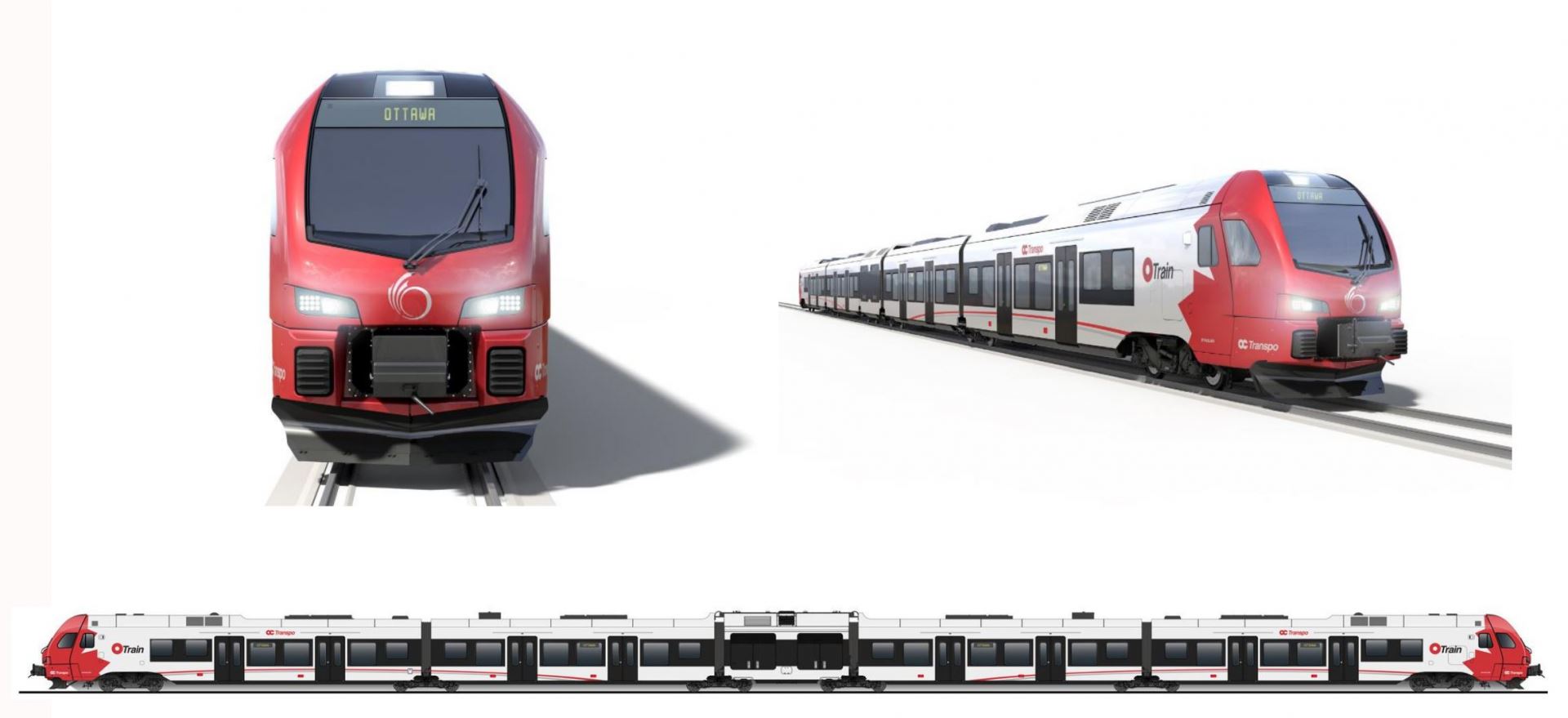reaperexpress
Senior Member
Stadler FLIRT. Currently in service with TexRail (Ft Worth, TX) and on order for DART (Dallas, TX), Arrow (Redlands, CA) and OC Transpo (Ottawa, ON).Which brings us back to the question of who can name any FRA/TC-compliant DMU type which is currently available for production…

FRA compliant (no waiver required) under Alternative Compliance, in effect since 2019 (basically EU regs plus a thicker windshield). Stadler is the first company selling European DMUs in North America because they were the ones who helped get Alterative Compliance approved in the first place, using the CalTrain Stadler KISS EMUs as a sort of pilot implementation. Given how easy it now is to get an European DMU certified in the US, I'm sure Siemens and Alstom would also figure out some cost-effective options if an RFP were issued.
TC does not have an equivalent certification category, so OC Transpo's Stadler FLIRTs run under a waiver. But I wouldn't be surprised if they're working on one, since they're generally pretty consistent with the FRA.
Last edited:




